
OR
PHOTOS: Nawadurga Naach performed at Dattatreya Temple
Published On: January 16, 2021 07:40 PM NPT By: Republica | @RepublicaNepal
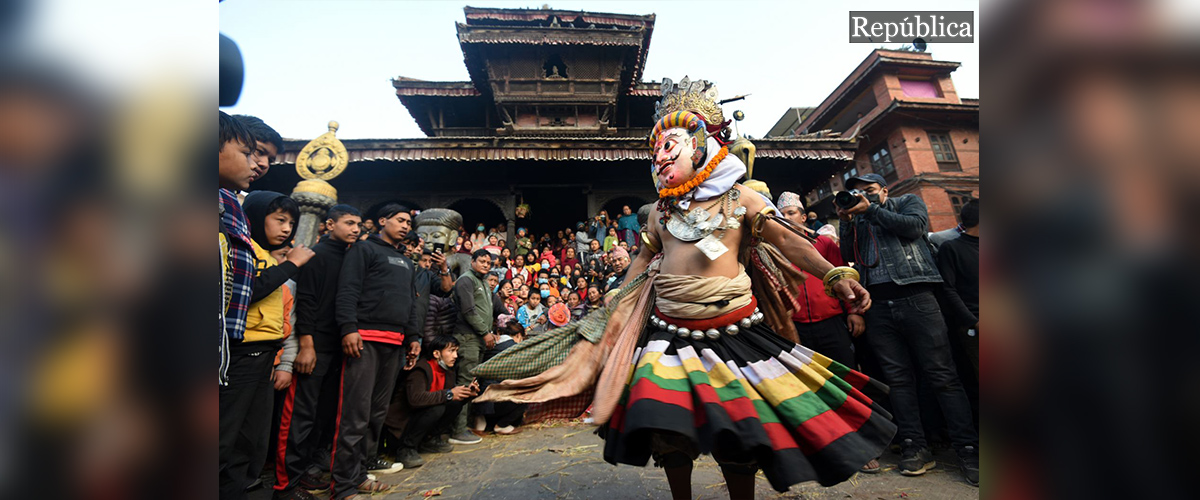
KATHMANDU, Jan 16: Locals of Bhaktapur on Saturday performed the Nawadurga Naach, a traditional cultural dance, at the Dattatreya Temple in the city.
The eight-month-long dance, which is performed in various places inside and outside the Kathmandu Valley, kicked off on Friday (Jan 16) this year. The dance commences on Magh 2 (second week of January) every year from Suryamadhi of Bhaktapur Municipality-9 and concludes on Bhalbhal Ashtami.
The naach is exhibited at different localities on different days. The dance is performed at 21 different areas of Bhaktapur Municipality including Dattatreya, Kwathandau, Gachhey, Dachhutole, Nagpokhari, Inacho, Golmadhi, Yachhey. Likewise, as per the tradition, the dance shall be exhibited in different localities of Taumadhi, Talako, Pottery Square, Nasmana, Gahiti, Kwachhey, Tibukchhey, Sukuldhoka, Durbar Square, Khauma and Itachhey.
Also performed in Madhyapur Thimi and Changunarayan municipalities, the dance is performed in Tokha, Sanga, Kavre, Nala, Dhulikhel, Shrikhanda Pur and Khurpu outside Kathmandu.
Clad in traditional attire, the performers impersonating different gods and goddesses should perform the dance barefooted. The cultural tradition suggests that the performers should have a specific food intake and stay away from family members throughout this holy proceeding.
Navadurga Naach is understood as Jhalakyegu in Nepal Bhasa. It means to fish which is not exhibited in the naach. The viewers whistle and tease the performers (Devgadh) while they chase them in return. There is a tradition of providing offerings if Devgadh succeeds in catching the chased person. On this note, anyone who is chased and caught is considered the fish which is why the occasion is associated with catching a fish.
According to historians, the traditional dance was introduced during the era of a Bhaktapur King, Bhuwan Malla (1505-1519 A.D). The naach is believed to be introduced as an alternative to combating famine that hit Bhaktapur in 1513 A.D.
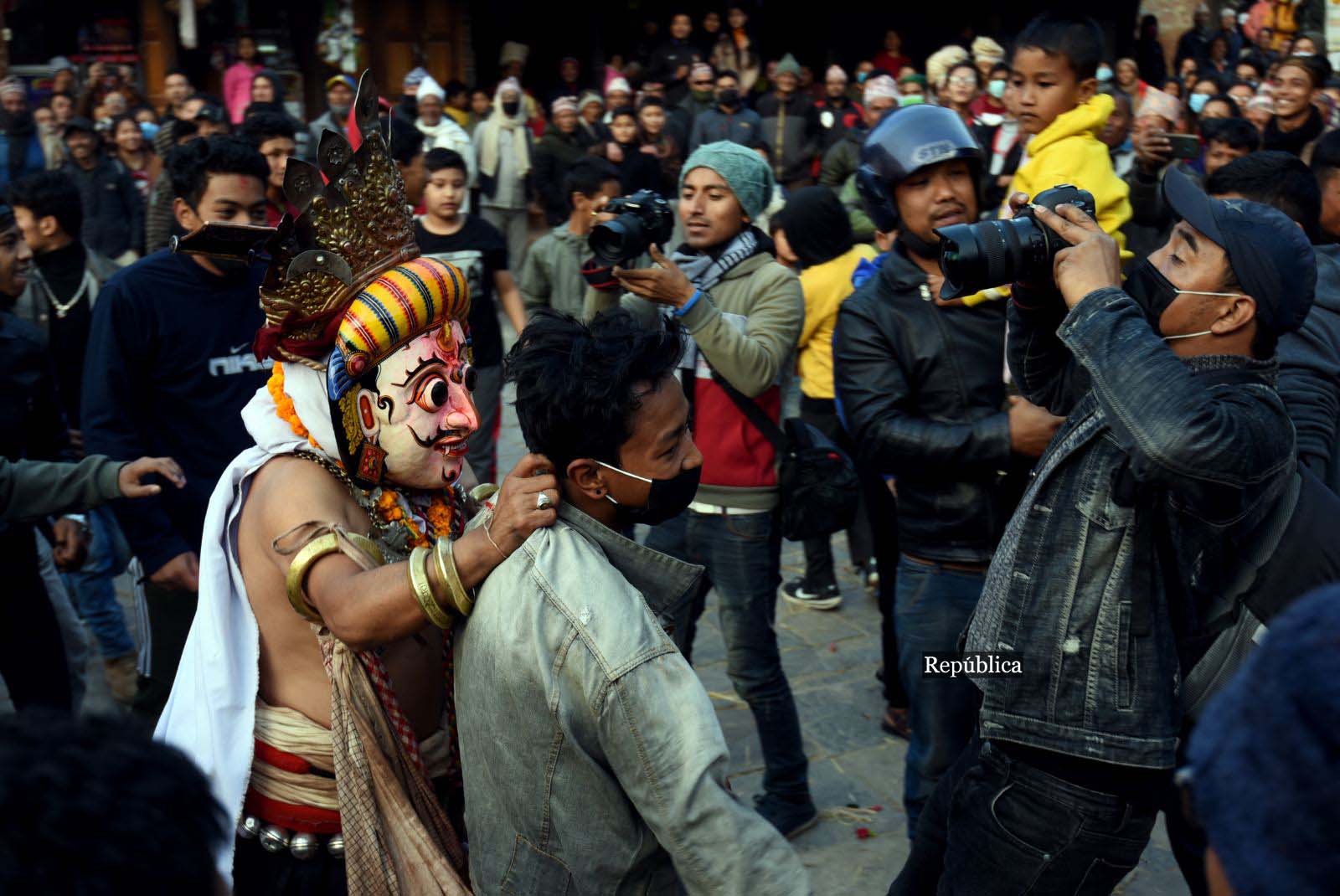

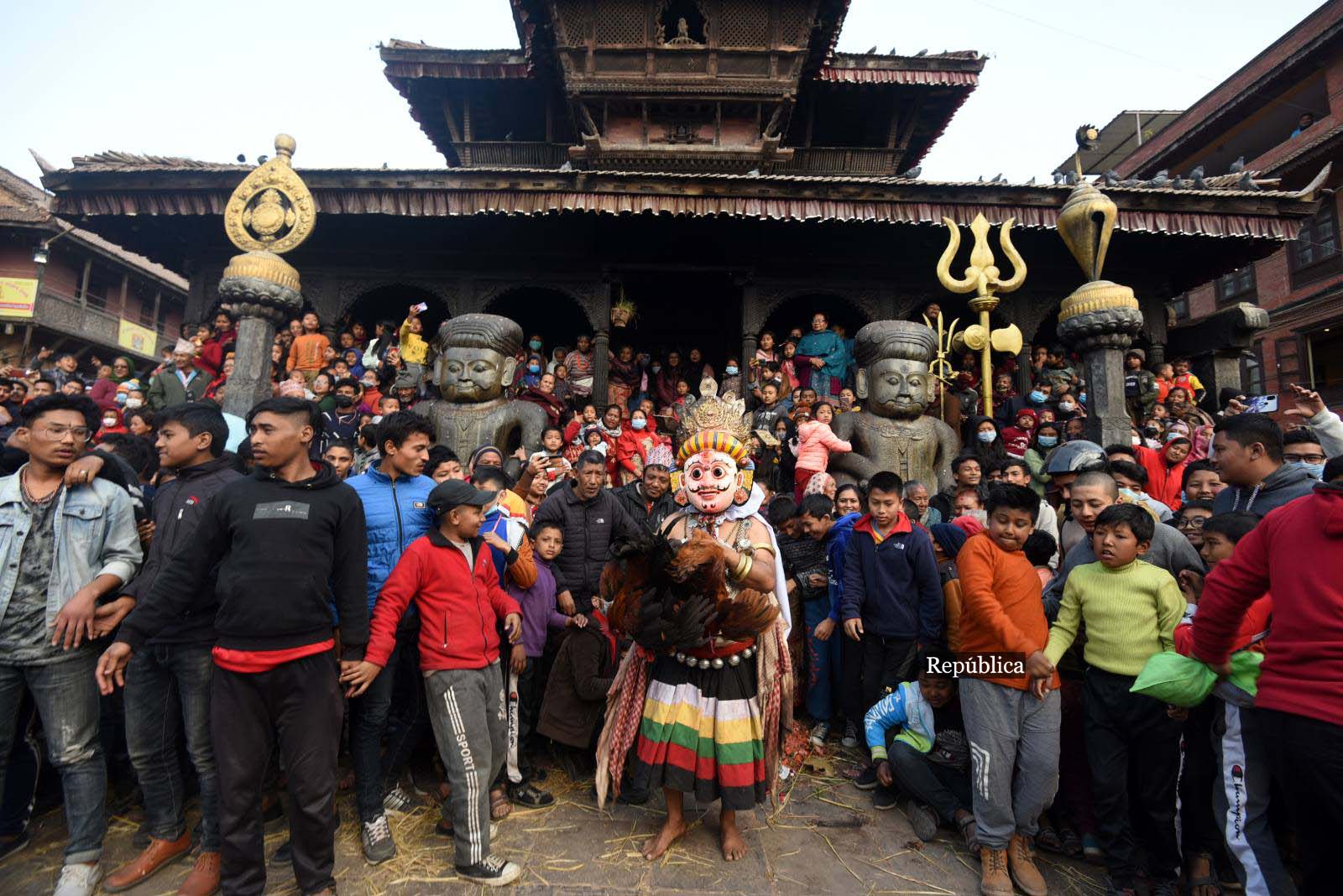
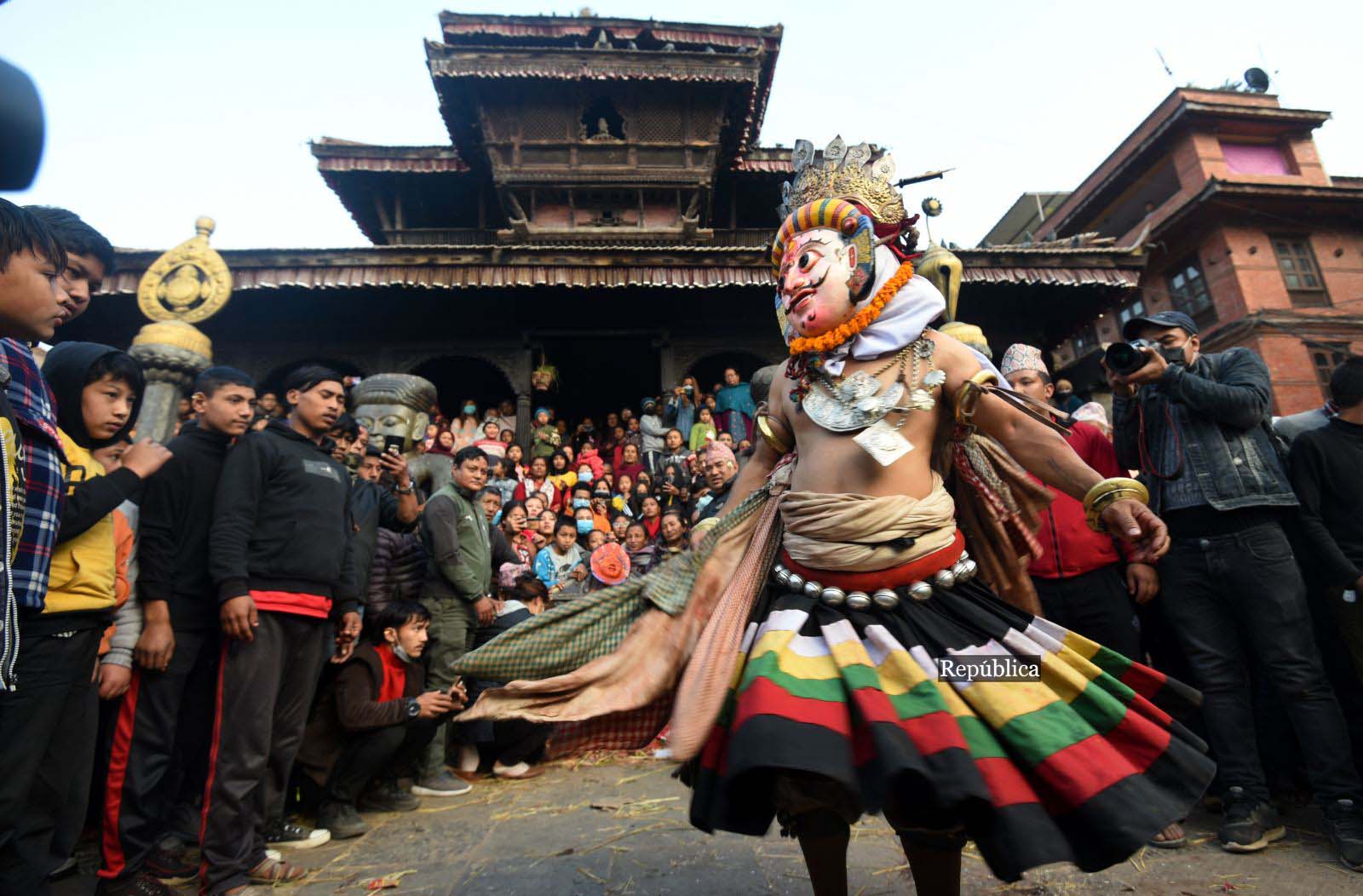
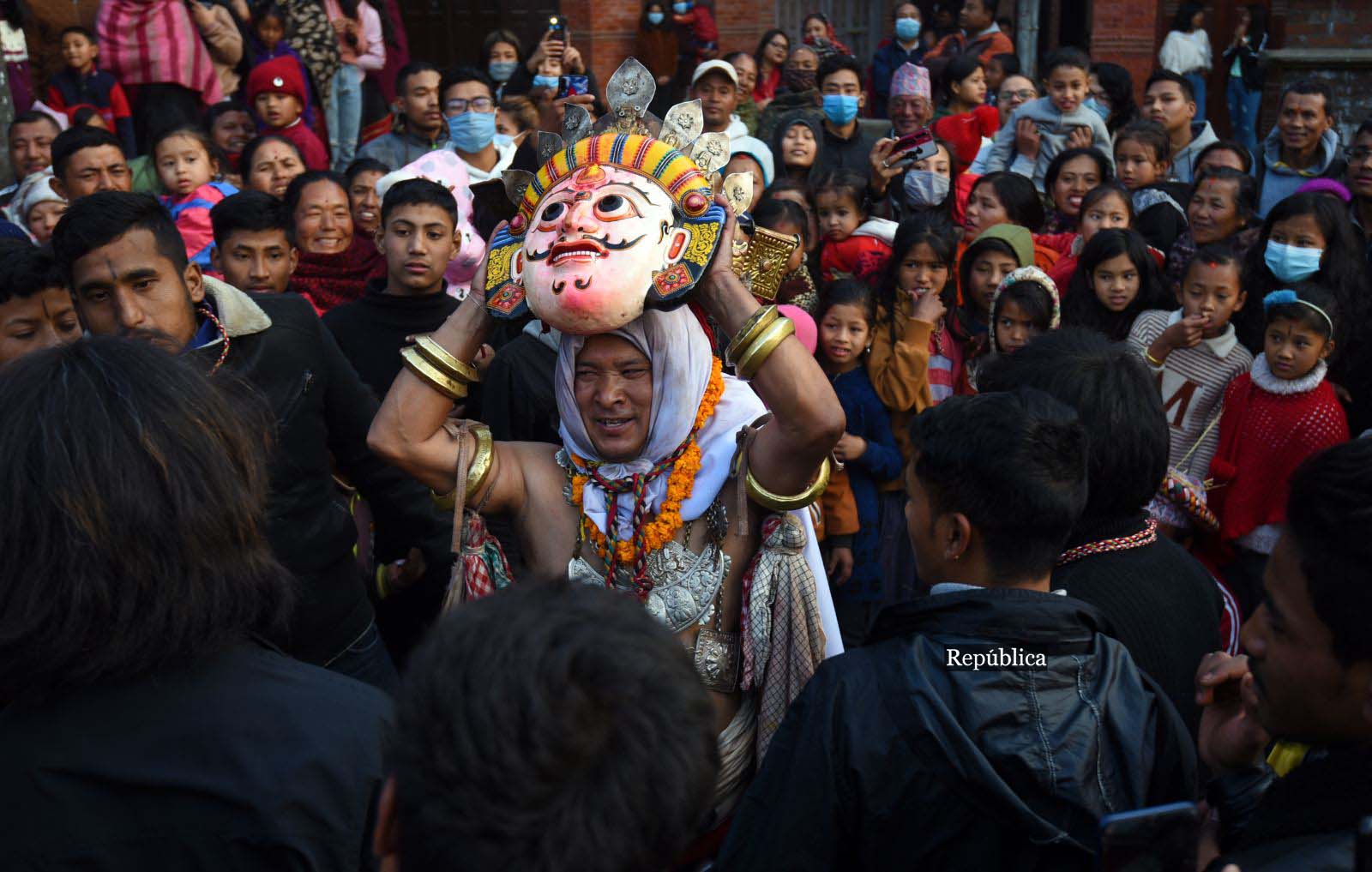


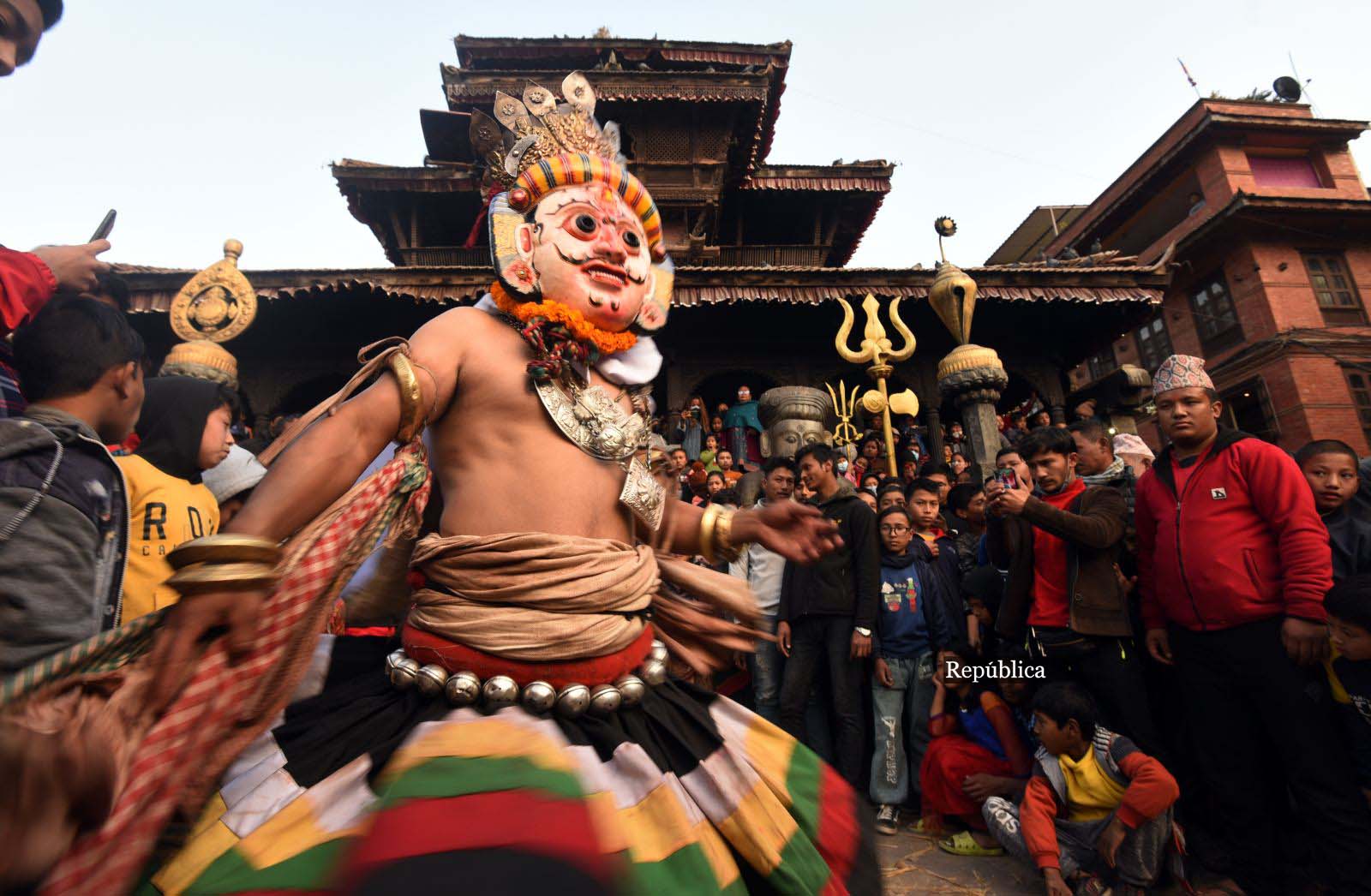




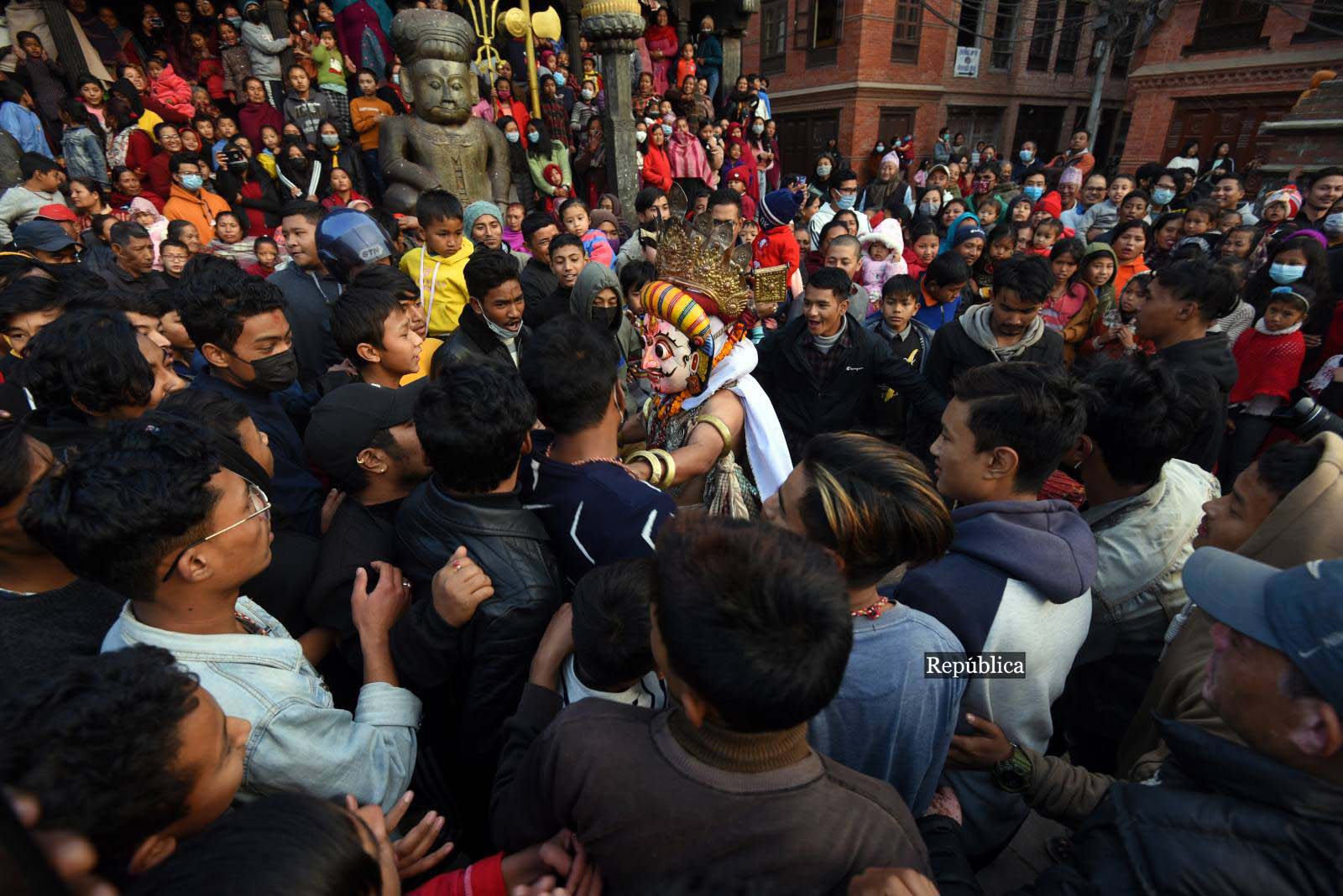

You May Like This
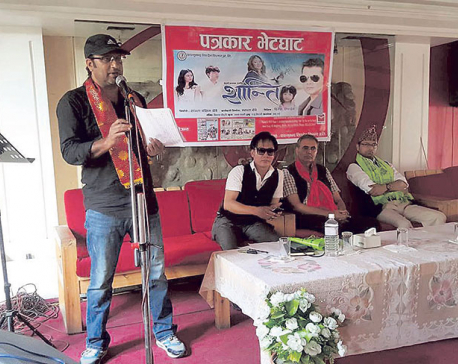
‘Shanti’ premieres two songs
KATHMANDU, Oct 1: Sushil Chhetri and Nisha Pomu starrer ‘Shanti’ has released two songs: ‘Baleshi Ma Pani Khasyo’ and ‘Phelo... Read More...

Nepal online trade: Decorating Nepal
Nepal Online Trade is a business initiative of Sajak Yonjan that sells décor materials imported from China, Hong Kong, and... Read More...
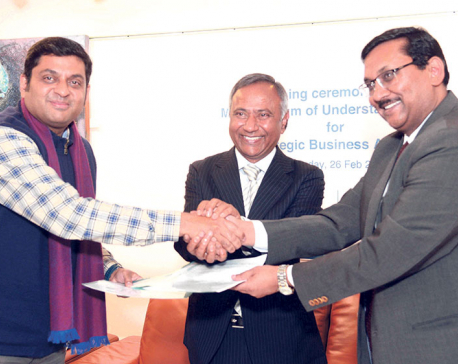
Standard Chartered Bank Nepal, Nepal Mediciti join hands
KATHMANDU, Mar 1: Standard Chartered Bank Nepal Ltd (SCBNL) and Nepal Mediciti have signed an agreement to provide various discounted... Read More...






Just In
- Class 12 exam starts today with participation of over 390,000 candidates
- Weather expected to be partially cloudy in hilly areas, clear in remaining areas
- Navigating the Digital Diplomacy Divide: Balancing Tradition and Technology in Global Relations
- Youth attempts suicide amid police torture over Facebook comments against home minister
- Time to declare EVMs’ end
- World Malaria Day: Foreign returnees more susceptible to the vector-borne disease
- MoEST seeks EC’s help in identifying teachers linked to political parties
- 70 community and national forests affected by fire in Parbat till Wednesday












Leave A Comment